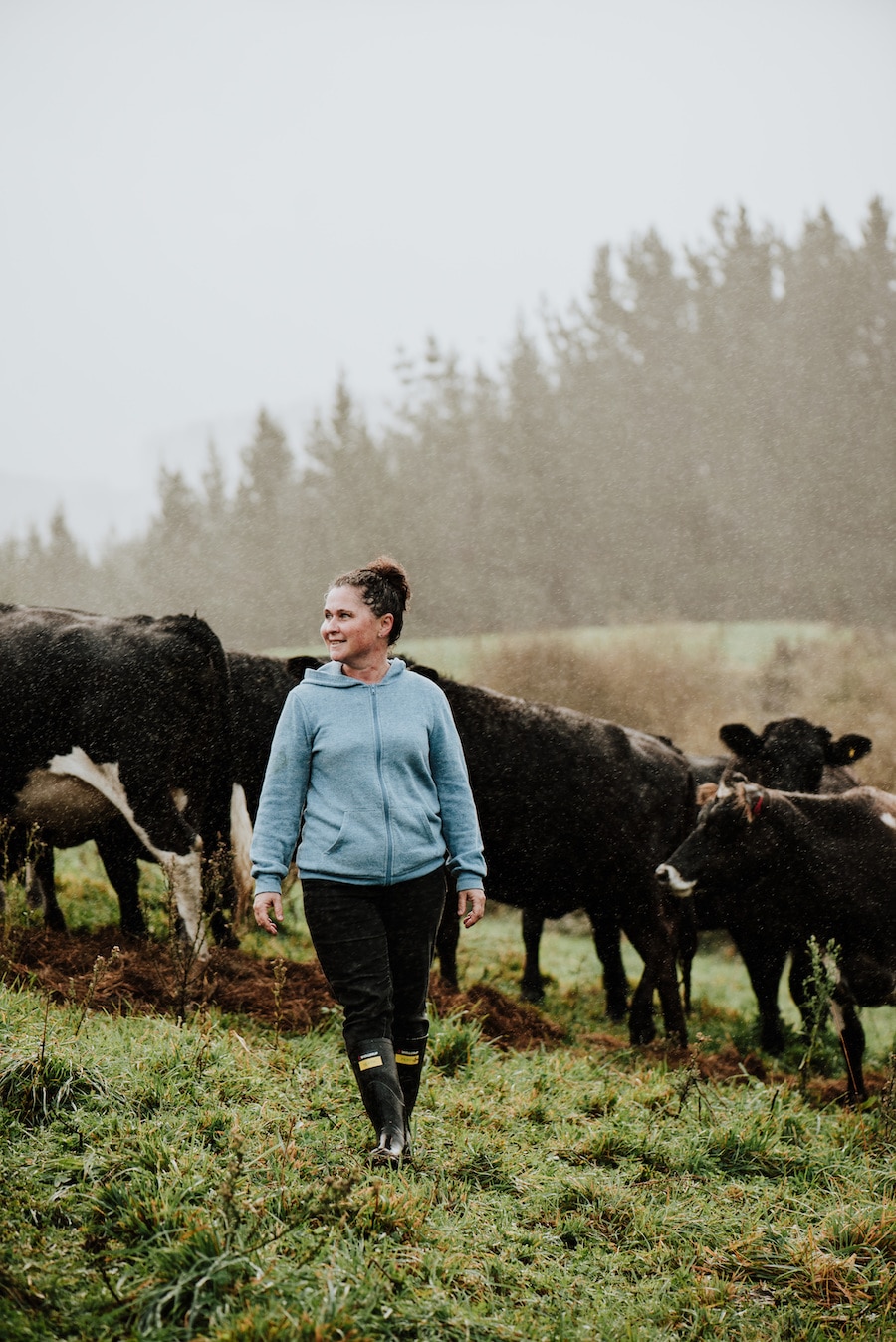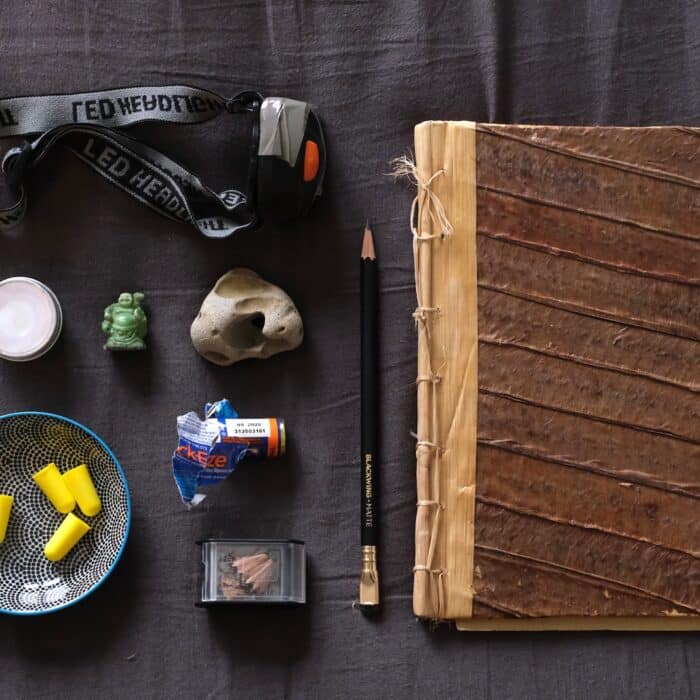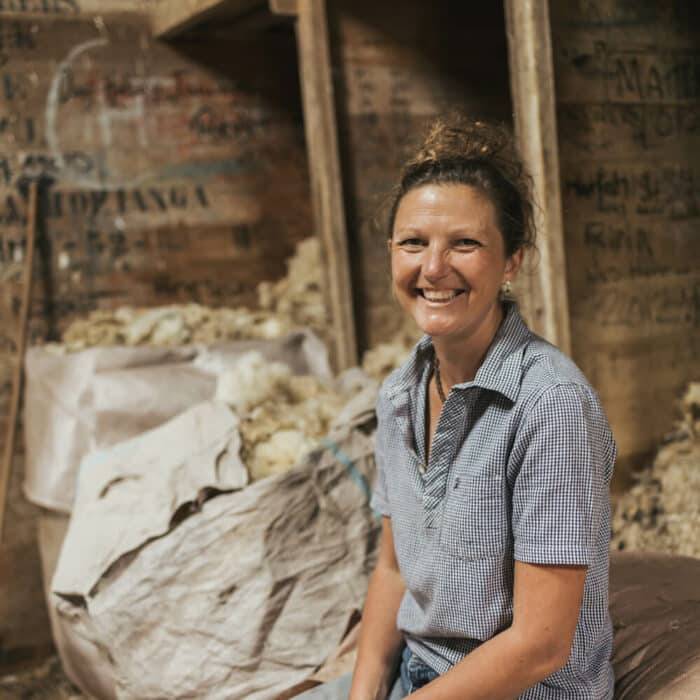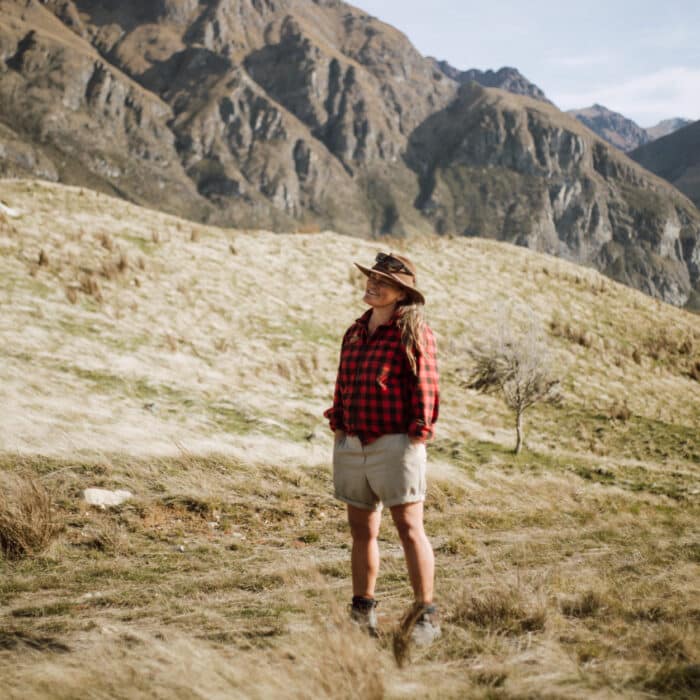10 November 2023
Soil Studies
Toitū te Whenua, Toiora te Wai. Our Land and Water.
Writer: AS TOLD TO ANNA BRANKIN (KĀI TAHU, KĀTI MĀMOE)
Photographer: Michelle Porter
Caring for the land and the environment starts with caring for the soil. That’s the ethos behind Rere ki Uta Rere ki Tai – a collaborative project on ten farms combining farmer know-how, scientific research and mātauranga with a view to honouring the mana and mauri of soil. One farmer participating in the project, Jenny Smith, joins project manager Dr Ashna Khan and Kairangahau Māori Erina Wehi-Barton in conversation to share what they’ve learned from the soil.

Top image. Erina on her whenua at Oparure Marae. Above. Jenny (left) and Ashna at Wilith Farm. “Obviously, I knew the soil was there but I never thought of it as ‘living’ or realised that there was all this life underneath the actual plant life,” Jenny says.
Jenny: We knew nothing about soil before. My husband, Miah, and I were sharemilkers down in New Plymouth, and when we bought our farm and shifted up to Ātiamuri we did what we’d always been told – smash the grass with fertiliser and it’ll grow. After two or three years we hit a brick wall. It was really disheartening and frustrating. We felt like we were doing all the right things, everything we’d been taught for years and years, and it wasn’t until Miah went along to a workshop with ecologist Dr Christine Jones that we realised there might be another way.
Ashna: Rere ki Uta Rere ki Tai began with a trial on Jenny and Miah’s land, and it has now been scaled-up to ten farms. We are looking at how we can undertake different land-management practices that lead to better outcomes. We advocate for less nitrogen use and instead rely on what we call the “underground army” to do the work for us – the living bugs within the soil. It is fundamental for us to focus on the mana and mauri of the soil, respecting and honouring it as a living being, and giving it time to heal and flourish.

Erina (Ngāti Rereahu, Ngāti Maniapoto, Ngāti Rārua): The whakapapa of our people comes from oneone. These are our pūrākau that are told to us as tamariki. Within the project of Rere ki Uta Rere ki Tai, we use a cultural perspective soil-health framework – this is achieved by assessing, observing and moderating the mana and mauri of soil and how we give effect to sustaining the well-being of the oneone. Ko au ko te taiao, ko te taiao ko au – I am the environment and the environment is me.
Jenny: Every farmer is looking after their land as best as they know how, but the problem is that we don’t know what we don’t know. Before we started learning about soil, we always farmed what was on top and we never thought about farming what was underneath. It’s just a lack of education. The issue is getting the information out in a way that allows people to learn from it without feeling judged for doing what we were always told was best practice.

Ashna: All of the data and evidence we are collecting tells a story, and that story will help us advocate for a transition away from conventional farming methods. This project is managed by AgriSea, a small seaweed-based biostimulant company with strong values. We don’t focus on mistakes that have been made in the past. What we want to do is provide farmers a safe space to try out new approaches and we are hoping that it gains momentum.
Erina: What I love about Rere ki Uta Rere ki Tai is the fact that we’ve developed a knowledge buffet for our farmers where they can use what they need from mātauranga Māori and Western science. I think that’s great and it’s groundbreaking. For too long, people have always said that science has a greater weight than mātauranga Māori, but we are the living product of such wisdom. If we’re able to have those knowledge systems sit side by side and provide opportunities for people to choose what suits them and their circumstances, then we start to see the change.
Jenny: The trial block showed fantastic results under the soil – it changed immediately. We selected one of our most difficult blocks for the trial and it sat alongside a conventional block so we could monitor it closely and compare it. It only took three years for the trial block to grow for longer in summer. It doesn’t dry up as quickly as the conventional paddock. That’s when we started converting the whole farm.
Erina: The whenua will always provide the sustenance required for itself; sometimes it needs the time to do so. As humans we feel like we need to fix everything but a lot of the time we tend to make a bigger mess. There are certain “weeds” that will grow because that’s what the whenua needs at the time, and part of my work is helping farmers to understand that’s what’s happening.
Ashna: Before this project I didn’t know that soil has a smell. On my first farm visit, one of our team members dug a hole and started sniffing the soil. I thought, “What the hell is he doing?” Now I know that soil has a smell and it can tell you a lot. If it’s sweet smelling, like good coffee, it means the bugs are thriving, the biostimulants are working and it’s actually doing its job. On top of that, there are the visual markers. I remember the first time we dug a hole on one of the trial blocks on Jenny and Miah’s farm and there were all these worms. You should have seen us – we were just jumping up and down.

Jenny: This project has revitalised our love for farming. If more farmers can take on this concept, even if they change just one thing, it could make a huge ripple effect. Everything we do to protect our soil filters through to the plants, which filters through to the animals, and then it filters through to us as well.
Erina: Every action we perform today has an effect on tomorrow. We must leave the whenua and our wai better than how we receive it. It’s our duty of care for our mokopuna – it also comes down to how much we value ourselves.
Ashna: In my religion, Islam, we believe that we are made from soil and we go back into the soil when we die – it is the circle of life. Everything starts and ends with soil, so you need to look after it and respect its mana and mauri. This concept is very deeply embedded in my religion and now it is my work, and that makes me really proud.

Jenny: We’ve become really passionate about sharing what we’ve learned with other farmers. We’re saving money because we’re not using so much fertiliser. And then there is a big difference in animal health – we have lower empty rates and we don’t have the down cows that we used to – we think because they’re eating better quality feed. I hope our vegetable growers start looking at this kind of thing as well – imagine how healthy humans would be if we were getting the same through our food!
Erina: Like everyone else, I have an ongoing connection to this kaupapa. It’s not something I do Monday to Friday, nine to five. It’s something that started well before this project and it will continue after it finishes. I eat, live and breathe this kaupapa and I hope that I can share the love of mana and mauri in every facet of te taiao with those that I share space with.
Erina says, “We’re being strategic with our riparian planting so not only does the whenua gather the nutrients and sustenance it requires but so can the farmers. If they’re using akeake, we’re teaching them how to use akeake as a poultice for aching joints and broken bones.”
Glossary. Akeake, hopbush. Hononga, union, connection, bond. Kairangahau, researcher. Kaumātua, elder. Kaupapa, topic, project. Mana, an enduring, god-given power inherited at birth. Maramataka, Māori lunar calendar. Mātauranga Māori, Māori knowledge. Mauri, energy, life force/essence. Mokopuna, grandchildren, descendants. Oneone, soil. Pūrākau, cultural narratives. Tamariki, children. Te taiao, the environment. Tikanga, customary system of values and practices based on social context. Tohu, sign, cue. Tūpuna, ancestors. Whakapapa, genealogy. Wahine Māori, Māori woman. Wai, water, waterways. Wairua, spirit. Whānau, family. Whenua, land.
Revitalise Te Taiao is a research programme working alongside agribusinesses and communities in three locations as they progress land-use change, work with value chains and connect with markets to revitalise te taiao. Learn more at ourlandandwater.nz/revitalise. This is the seventh piece in a series supported by the Our Land and Water National Science Challenge.
If you enjoyed this story, please share with someone else.
This story appeared in the Kōanga Spring 2023 Edition of Shepherdess.
Get your hands on a copy.
Related Stories
Seeds of the Future
Unable to return to the career she had carved out for herself in Southeast Asia, Sonya Prosser took a job at Walter Peak High Country Farm on the shores of



